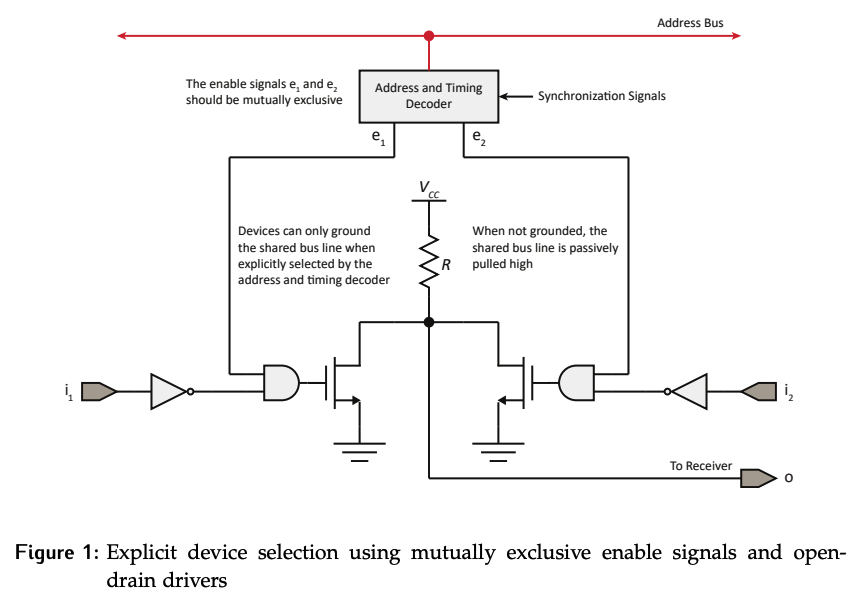Now that we know how hardware drivers can be constructed, let’s consider the device selection options. When there are multiple drivers on a shared line, there must be a method of selecting the active driver such that conflicts are not created.
Explicit Selection
In explicit selection, a single unique driver will be enabled. This could be done by a range of techniques, including selecting a unique address, arbitration, a timing signal or an event signal. Explicit selection is typically used with general purpose selection buses.
The enable lines on tri-states must be mutually exclusive, which in turn forces the selection of only driver at a time. This is an example of explicit selection with active devices.
Passive Explicit Selection
Explicit selection can also be used with drivers that have a passive component, shown in Figure 1. In this case, an AND gate is added before the transistor; this applies the AND an enable signal to the control signal of the transistor, preventing it from turning on unless it’s the enabled device. Just like the tri-state case, the devices will be mutually exclusive as long as the enable signals are. If the enable signals are not exclusive, this is a design error.

Implicit Selection
In implicit selection, the line must have a passive path (passive pull-up or pull-down), and the individual drivers are in a high impedance state when this path is driving the line. It’s safe for more than one driver to turn on at a time and exclusive device selection is not required. This is commonly used to allow interrupt lines to be shared safely.